Movers & shakers and kleptoparasites

I was inside the engine of the tropical rainforest. It was a drippy July morning at the Arenal Observatory Lodge reserve near La Fortuna, Costa Rica. Alone on the forest trail, staying quiet and alert as army ants marched and foraged parallel to the trail, I was accepted by three species of “obligate” antbirds, also known as kleptoparasites, that permitted me to observe their behavior up close. They glanced my way from time to time, but then went back to work, scanning the moving army from a foot or two above ground, jumping down to gulp insects in an instant and then returning to a perch above.


The Bicolored, Spotted and Ocellated Antbirds survive primarily by following the literal movers and shakers of the forest floor. I also saw a Buff-rumped Warbler nearby, but not in the middle of the swarm. They too take advantage of ants, but they are more diverse in their territories.
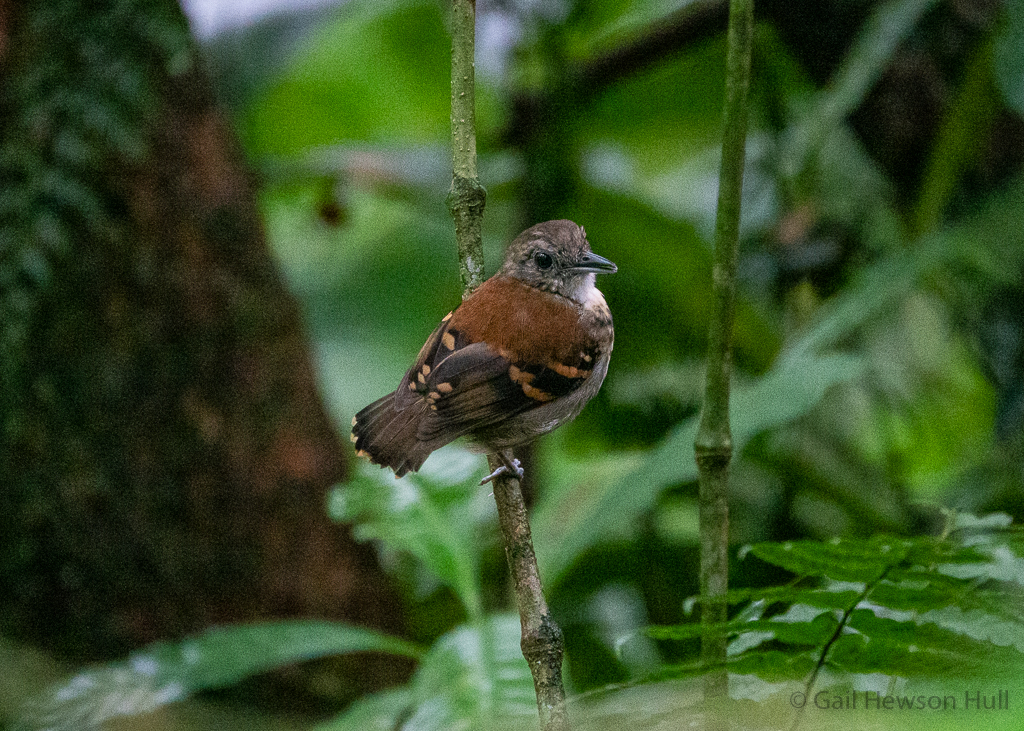
Eciton burchellii are almost certainly the species of army ant I observed that day, as it is the most predominant species in Costa Rica. There may have been a half million ants moving through as I watched from the trail for one and a quarter hours. I calculated whether I could suddenly become surrounded and determined that I could make a run for it if necessary.

They kept coming in a swath that looked two meters wide. The antbirds (also included in that group are thrushes, wrens, ovenbirds, antshrikes, woodcreepers, tanagers, and others) in an E. burchellii entourage in wet tropical forests depend on the ant predators to flush out insects, other arthropods and spiders from decomposing leaves and other detritus. Antbirds do not eat ants. Carl and Marian Rettenmeyer* spent their professional careers determining that 550 diverse species of animals co-exist with army ants (including mites that cling to their feet), and around 300 species depend on army ants for their very survival.
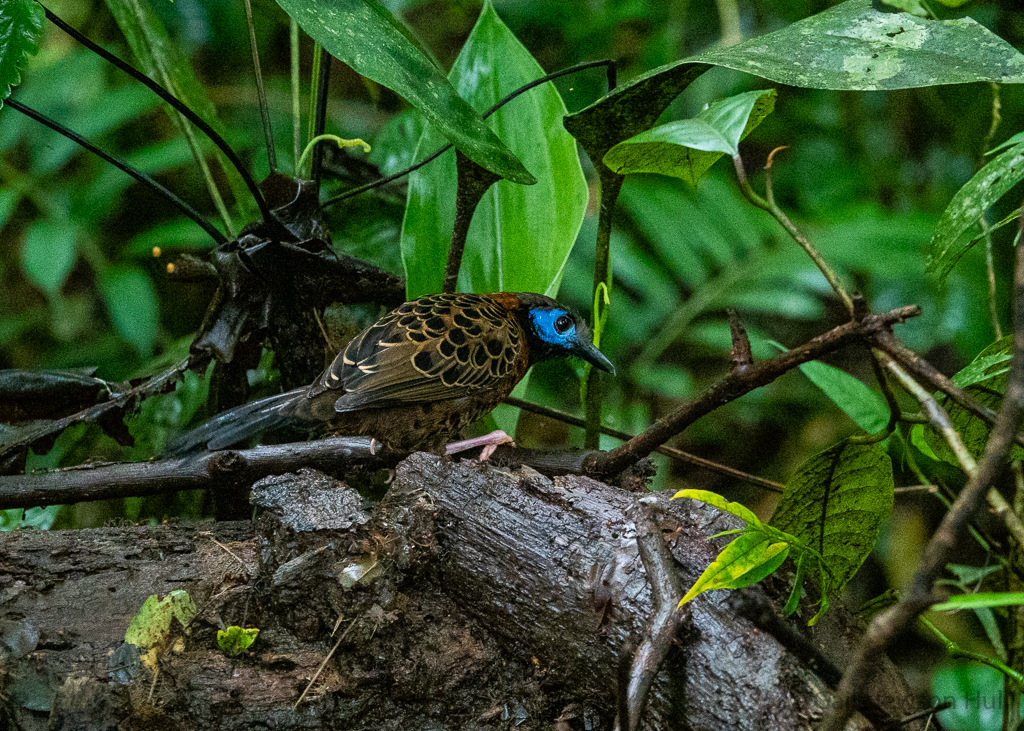


Since I first encountered army ants and a bird entourage in Corcovado National Park in 1999, I have wanted to see this phenomenon again and have a camera ready to capture the bird activity. Those 75 minutes were thrilling for me; I will never forget the sense of being part of their world for a time. A sudden appearance of Coatimundis took my eyes off the birds and ants. About forty or more family members emerged silently from the forest, most crossing the trail into the forest on the other side. A couple of juvenile coatis diverged, coming over to smell my shoes. They sniffed, looked me in the eyes, and then went quietly on their way.



__________________________________________________
Army-ant colonies require more than 10 ha to maintain their worker force**. At Finca Cantaros, my 7-ha former property in the Zona Sur of Costa Rica, there were just leaf-cutter ants, and lots of them.
*Ed Yong, An entire world follows the march of the army ants, National Geographic, 11/30/10.
**E.O. Wilson, The Diversity of Life, Harvard University Press, 2010.
Share this:
- September 5, 2021
- fauna
- Comments closed
Birds That Cheered Me in 2020
I know many people who read my posts will agree: what would we have done without birds in our lives this past year?
Perhaps our very sanity depended on them! Without further ado, some photographs follow–all taken in New Mexico–that will always remind me of happy hours on the trails. And a few other photos at the end that I hope you enjoy.
My warmest wishes to you all for a bright, safe and happy 2021. As you gradually emerge into the light, may you appreciate nature, health, democracy, family and friends more than ever.

Western Bluebird with Juniper berry on my daily walk in the Zocalo community environs.

Grey-crowned Rosy Finch, Sandia Mountain near Albuquerque.

Cassin’s Vireo at Buckman Mesa area of Chile Line Trail, on the Rio Grande, about to feed nestlings.
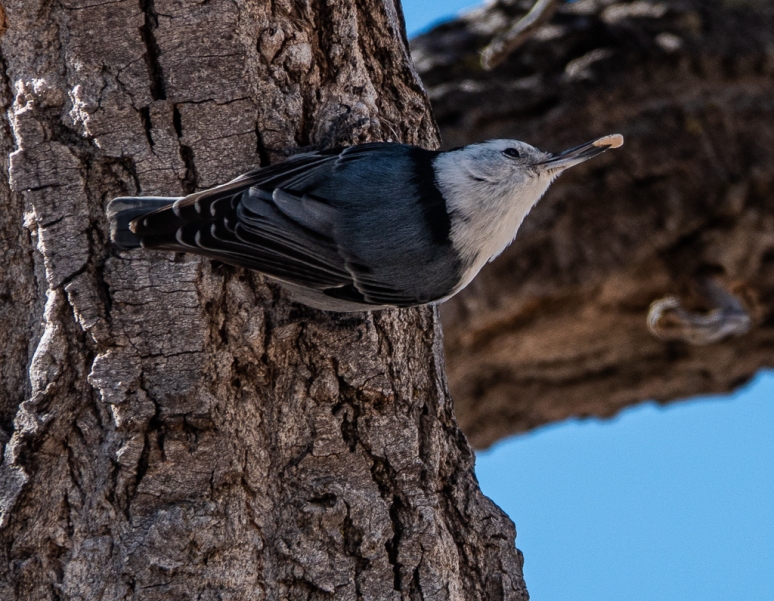
White-breasted Nuthatch with Pinyon Pine nut in Santa Fe’s Randall Davey Audubon Center.
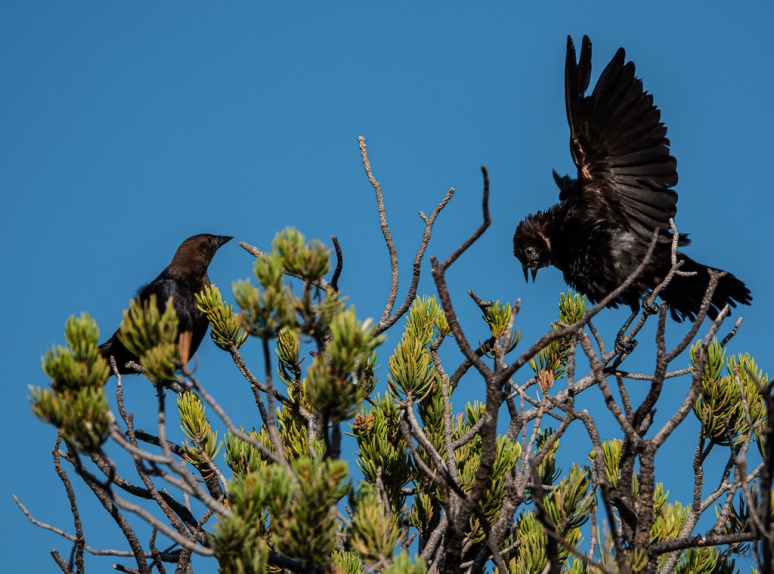
Brown-headed Cowbirds. Two males alternately practiced their courtship displays in the Zocalo community environs.

Yellow-breasted Blackbirds, San Antonio, NM. A joyful trip with friends resulted in many new sightings back in January.

American Goldfinch at Randall Davey Audubon Refuge.

Adult male Calliope Hummingbird with streaked rosy gorget visiting Penstamon sp. flowers in the Zocalo neighborhood.

Wilson’s Warbler, male, searching for insects near my front door in the Zocalo community.

Ash-throated Flycatcher on the Diablo Canyon Mesa.
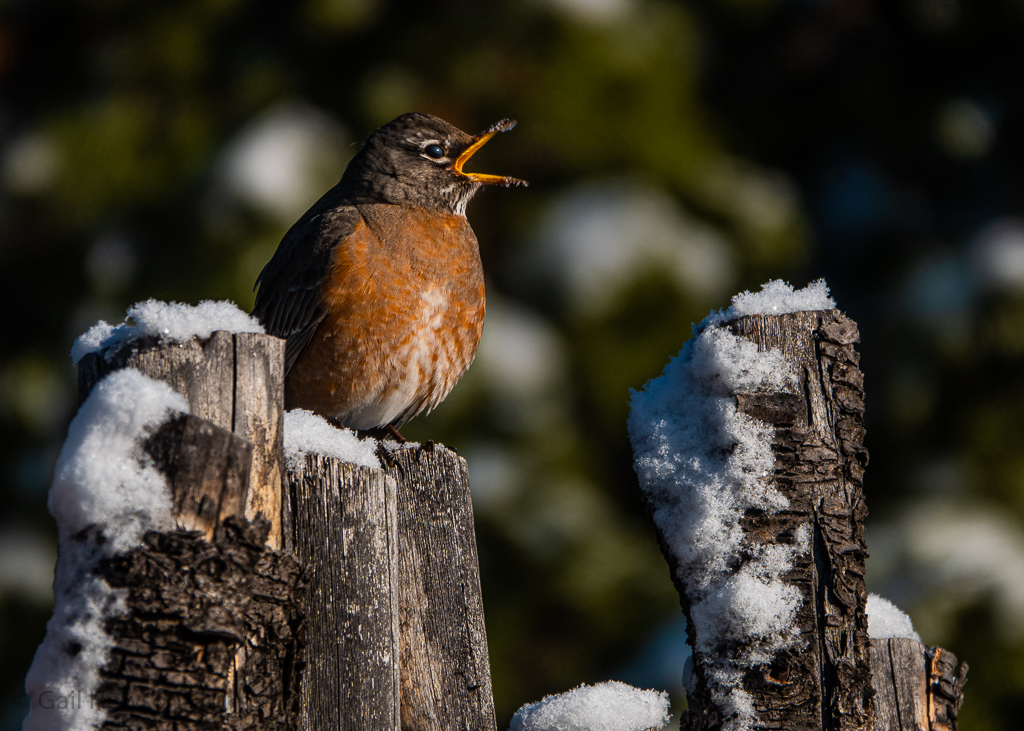
American Robin already in courtship song in early spring, after a late snowfall.

Blue Grosbeak in Otero Park, near Socorro, NM. I saw this thanks to Amy Erickson, Audubon Southwest avian biologist.
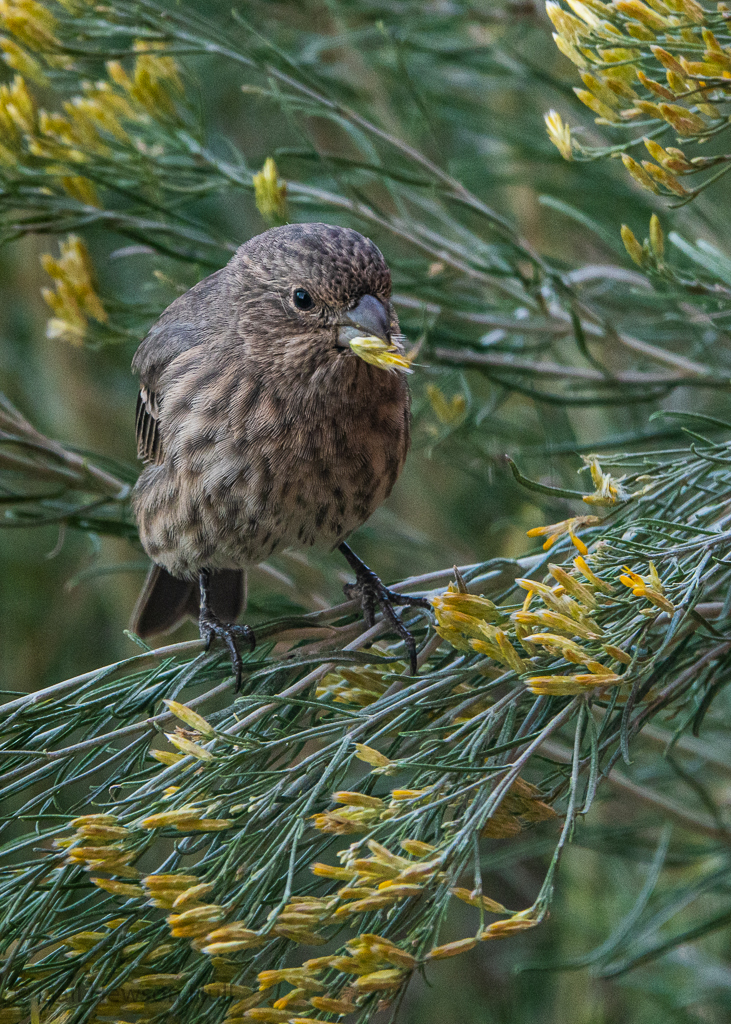
House Finch eating “Chamisa” flowers, aka Ericameria nauseosa, or rubber rabbitbrush.

Ruby-crowned Kinglet looking for flowers or seeds outside my window after early September snowfall.
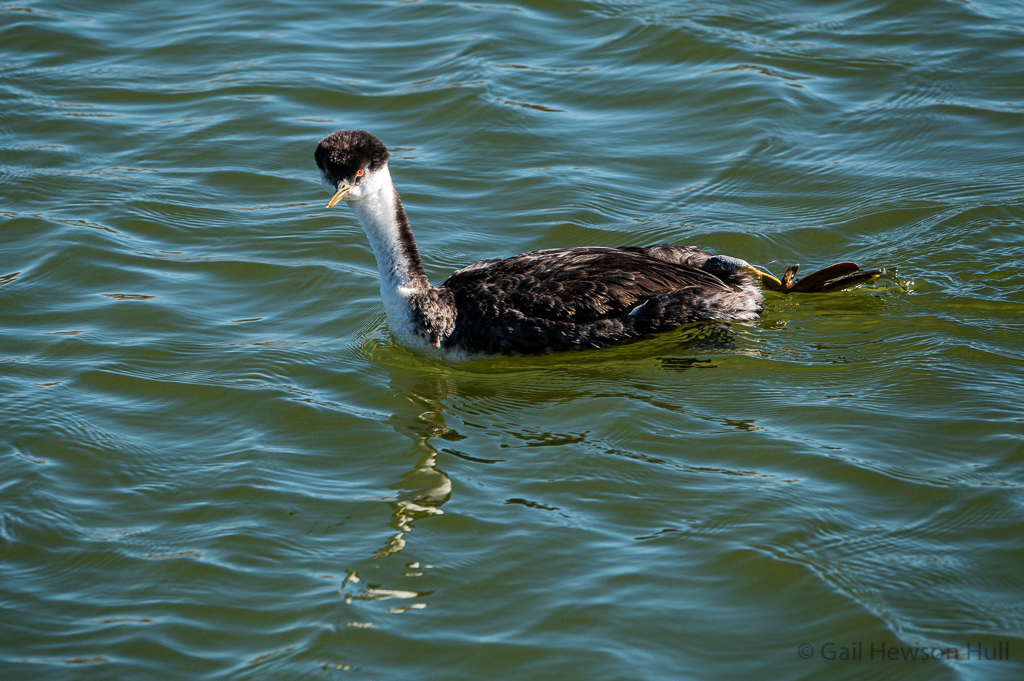
Western Grebe in Ohkay Owingeh Pueblo pond. The grebe seemed to have a broken foot. Thanks to a good friend who invited us to join him, Birding Pal Kim Score of Albuquerque gave us a wonderful day of socially distanced birding, introducing us to several new and wonderful sites. She works for the Central New Mexico Audubon Society and guides people to other western states as well. Superb!

Another winged beauty: the Virgin of Guadalupe statue seen at Arroyo Seco, NM.
Also below, a colored pencil drawing I did soon after Ruth Bader Ginsberg’s death. It was between my successful cataract operations in September and October, thus–the world’s colors looked different to each of my eyes. I profoundly admired RBG, and she was very much on my mind as I worked on the drawing over several weeks. May she rest in peace.
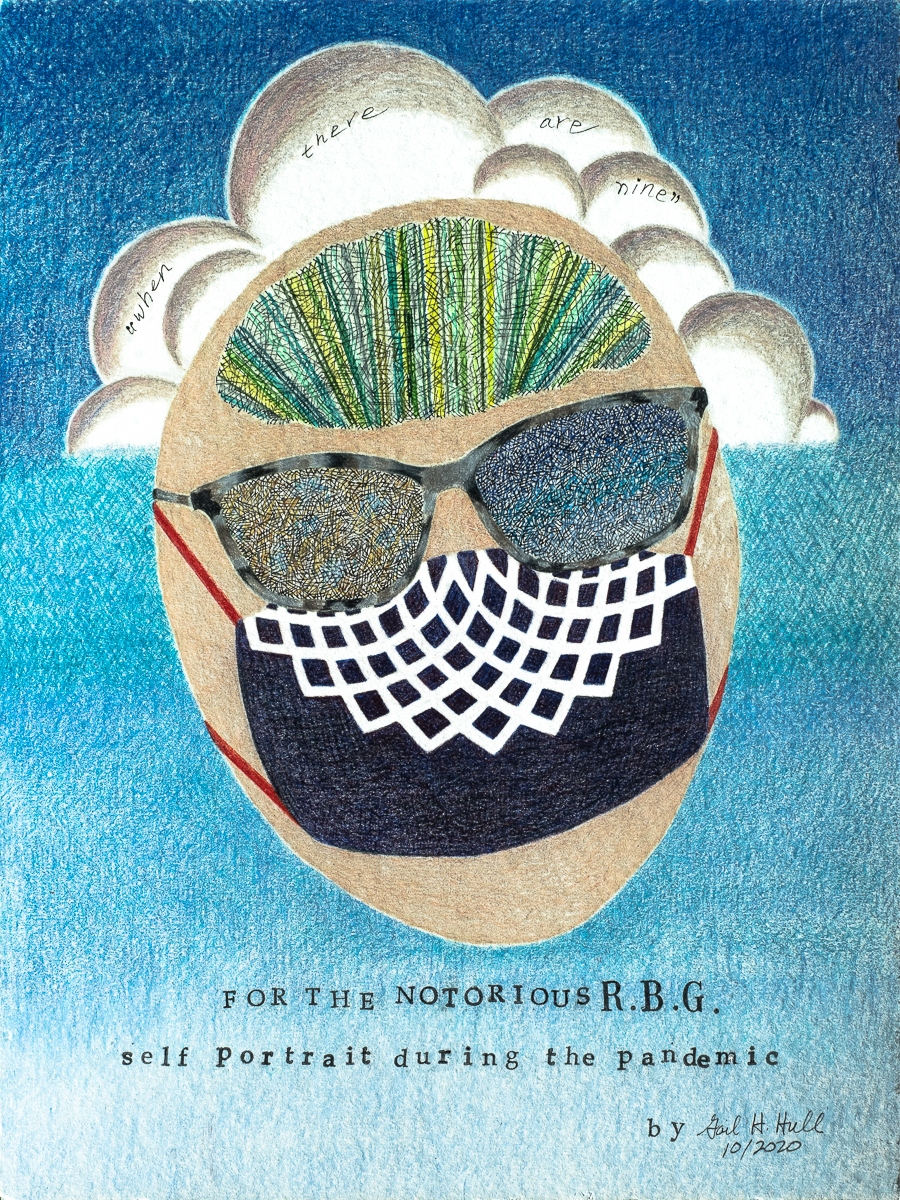
Gail Hewson Hull, self-portrait homage to RBG, October, 2020. I am in a greenlining phase in all my art. Greenlining to me is the conceptual opposite of redlining and invokes openness, equality, transparency and healthy life. (See also, previous post).
Share this:
- January 2, 2021
- art, fauna, flora
- Comments closed
Solitude for Art and Birding
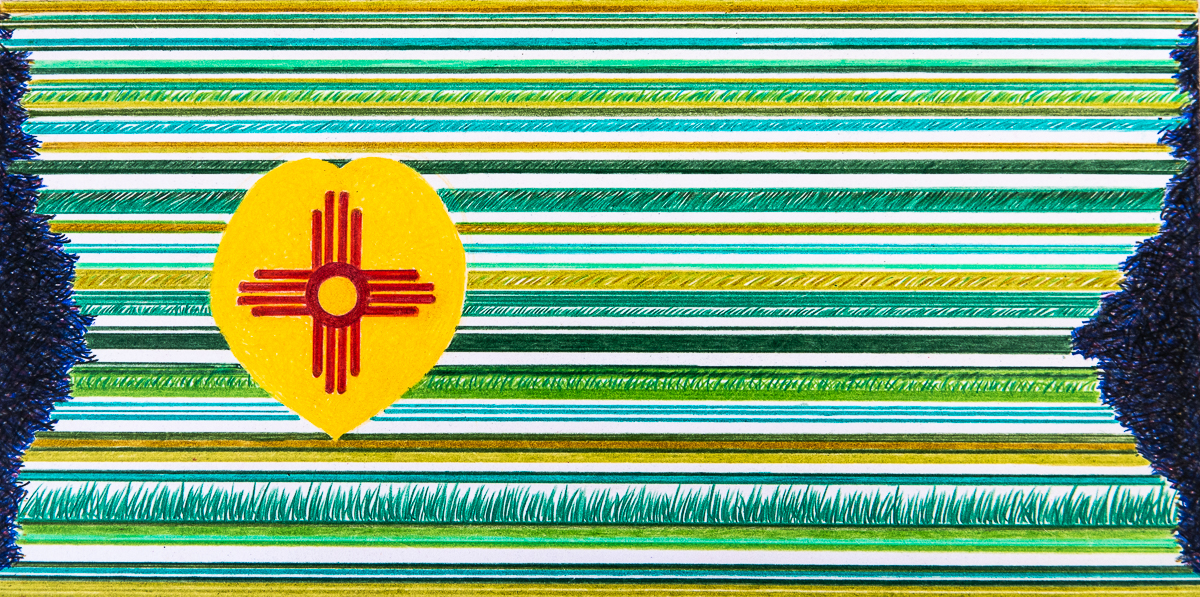
“Greenlining” by Gail Hewson Hull, 9/2020; colored pencil, 5.5″ x 11″. The ZIA sun symbol is sacred to the Zia Pueblo Native American. It is found on New Mexico license plates and is used by artists, non-profit organizations, government entities, and merchants of NM. In August, SITE Santa Fe, a local contemporary museum, held an art contest; this was my entry in answer to the theme: what does resilience mean to you? My term greenlining (suggesting life, health, growth, inclusion) is to me the opposite of redlining (suggesting discrimination, intolerance, injustice, exclusion).
Drawing in and on Solitude
Now more than six months into the Covid-19 Pandemic and avoidance of most in-person socializing, I find myself following some of my interests totally alone for hours at a time and finding intense soul satisfaction. What follows are attempts to describe these two distinct pursuits that rely on solitude.
I realize how long it has been since I’ve had the luxury of being by myself, not only for solitary walks or reading, but for extended periods of activities more personally challenging. Putting pen, pencil or brush to paper kindles questions to self. What am I made of? Having processed and admired others’ art for most of my life, what does my own inward eye see? As a child of twelve I remember grabbing the TIME Magazine from the mailbox before anyone else in the household in order to study the weekly art pages. It was in TIME in the late fifties and early sixties that I first learned about the abstract expressionists, and about national and international art exhibitions. My interest in art and the art world has never ceased. So now, what can I create that is truly original artistically? Self-enforced habits of staying busy and, as a “practical” person, earning a living, always working for others, have governed me until retirement last year from managing a nature reserve and crafts store in Costa Rica. But an instinct that making art is fundamental to my sense of self-worth has always been with me. The discipline to DO art, however, came in very irregular waves. Now with my remaining years diminishing, I like the axiom Lend yourself to others, but give yourself to yourself.* Solitude for creativity is a gift to self.
Like many with artistic urges, I studied art history and took studio art courses in college. And in my late twenties, I took two painting classes, one in egg tempera at the College of Arts and Crafts in Oakland, and another class in painting–quite influential to my technical skill–with Franklin Williams at the San Francisco Art Institute. At that time I also wandered city streets taking photographs, eventually selling some photography through the Museum of Modern Art Rental Gallery. I sold or gave away early large painted canvases to friends and family. The drawing below from that period is one that I’ve kept all these years.

“The Sweet Smell of Leather”, High School Softball Mitt. Colored pencil and charcoal, Gail Hewson Hull, 1979. The glove was a gift from the Hamilton-Wenham, Massachusetts Regional High School Athletic Department upon my receipt of the Sportsmanship Award at the final senior assembly. The coach knew I was very attached to my mitt after three years on the softball team. The mitt traveled to Paris, France for my junior year in college abroad. I was the first female to play in the International Softball League on spring weekends in the Bois de Boulogne in 1968. Even stranger is that with this glove I was the winning pitcher (in relief) for the American Businessmen’s Team in its first bout that season against the Marines Guarding the U.S. Embassy Team.
Much creative work–like fine art or writing–requires meditative concentration; each decision about what to do next is not always clear and it takes courage before going forward. In writing one can always hit the delete button and rewrite, but making a miscalculation in a drawing can be devastating. I am one who cannot listen to music while thinking with purpose; nor can I listen to anyone speaking. Radio or TV voices are out of the question for my habits. Hours speed by; I can take a break and make lunch with my husband or go for a walk, but then am glad to get back to standing at my drawing table. To conceive an artistic intention, to be motivated intellectually and emotionally, and to act out a plan with persistence–few results in life to me are more rewarding. The nurse of full-grown souls is solitude. **

“TV Series #3: The Pope’s Coronation with Electical Interference”, egg tempera, ink and colored pencil, GH Hull, 1981. At that time televisions had CRT tubes that were sensitive to static. I took a photograph of the colorful result of interference and used it as an inspiration for the painting.
What a lengthy journey–in my case at least–it has been to prioritize solitude and to plan a daily schedule around it. I like to feel, after my 73rd birthday earlier this month, that I’m really just getting started. Maybe by the time I’m 80 I will have a recognizable style!

Golden Toad (Incilius periglenes) is an extinct species of true toad, once endemic to elfin cloud forest in Costa Rica. Ink and colored pencil, “Golden Toad” [Detail], GH Hull, 2007. I was lucky enough to see live Golden Toads at the Monteverde Cloud Forest ranger station in 1987, before the wild population of toads died off due to chytrid fungus. The last Golden Toad was seen in 1989. Its disappearance was the first extinction attributed to human-caused global warming.

“Ratatouille to Be”, colored pencil, GH Hull, 2007. Harry and I took a course together in Biological Illustration with Colored Pencils at the California Academy of Sciences and this is one of my results.

“Red-capped Manakin”, Mixed Media: hand-carved stamps, acrylic and bird in colored pencil, G.H. Hull, 2014. This was one of a series of eleven works that I created to sell in my indigenous crafts store in San Vito, Costa Rica.

“Ode to New Mexico with Cottonwood and Aspen Leaves”, colored pencil, G.H. Hull, 9/2020. I am in a green phase. In this drawing there are fifteen shades of green.
The Benefit of Solitude While Photographing Birds
The Randall Davey Audubon Center in Santa Fe, New Mexico–an excellent nature reserve–is just a short drive away, and on occasion I go there alone to get exercise and to bird. A few weeks ago (September, 2020), I went three times in the space of ten days and decided to change my birding strategy from slowly walking along the trails to just sitting still, mostly in a forested area adjacent to the Audubon reserve called Bear Canyon. Even at the end of summer, there are some green grassy areas in the lower section of the canyon’s otherwise dry creek bed indicating water slowly trickling on or near the surface. I sat on a rock near one of these grassy areas with my camera and binoculars and just waited and watched quietly, letting the birds get used to my presence. Indeed, they did gradually come closer and looked at me with curiosity.
This is what the habitat looked like in this small depression in the canyon surrounded by coniferous forest of Two-needle Pinyon, Juniper, Ponderosa, Lodgepole, and Whitebark Pine. To the right and west of my observation seat:

Scraggly brush, pine cones, bushes and grass. This will become a stream from snow melt in winter.
In front of me, the hidden water source beneath the grass that attracted many birds in the hours I observed the site:

Water is scarce, but it is keeping the grass green and attracting birds and probably mammals, too.
To my left and east, more good habitat for warblers, nuthatches, chickadees, wrens:
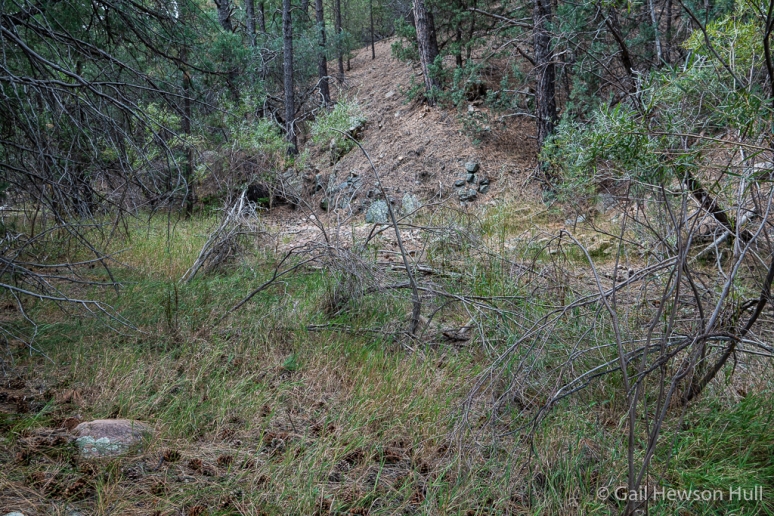
Mixed habitat, good cover, water, insects associated with water: birds are active here
To my delight, a coyote spotted me from the hillside forest to my left above me about 40 yards away. It barked at me and howled for about five minutes. I spoke to it in a calm voice, “Hello, Coyote. Everything’s OK here. I’m just watching the birds, don’t worry,” and it soon moved on, assured I was not a threat (not prey!).

Coyote observing me through the trees.

Howling coyote. I think it wanted to be acknowledged, so I finally spoke calmly to it.
I love solitary places, where we taste the pleasure of believing what we see is boundless, as we wish our souls to be.***
Many parents, I think, teach young girls to be afraid of venturing out in nature alone. Fortunately, my parents were unusual in trusting that our communities in either rural or exurban areas, were completely safe. I often went exploring for what seemed like hours in nearby woods. So even in Santa Fe, where there are bears and coyotes in the coniferous forests and in the juniper/pinyon pine forests, I am not afraid; I know what to do. Nature never did betray the heart that loved her. ****
But you are probably reading this far to see some birds, right? These are the species I saw on three occasions over a period of three hours all together.

Cordilleran Flycatcher

MacGillivray’s Warbler

Red-breasted Nuthatch

Wilson’s Warbler (female)

Wilson’s Warbler (male)

Mountain Chickadee
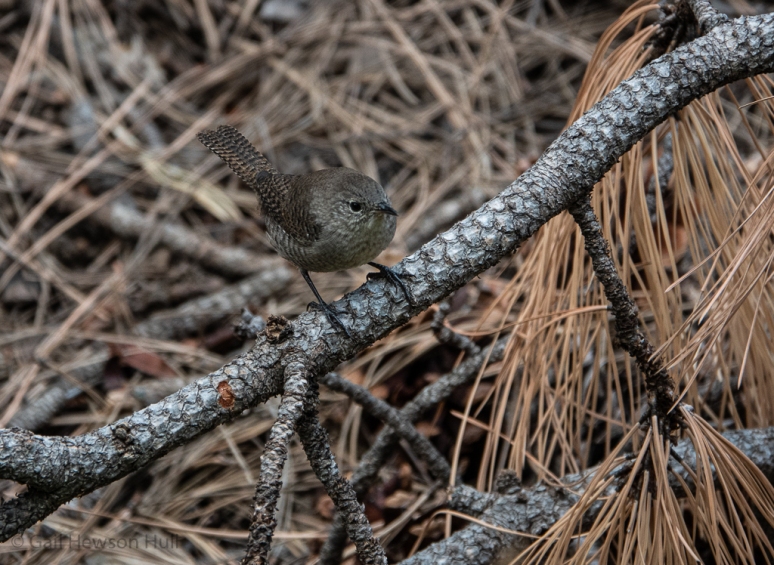
House Wren

And overhead, a curious Clark’s Nutcracker
So the lesson here is, if you want to become an object of curiosity for nature’s creatures, just sit still, preferably near water, and you may be rewarded with their company.
Searching for Answers
And finally, so much has happened in my country–and the world–since my previous post in May. People have died needlessly of the novel corona virus because our president does not believe in science or in leadership that would support our formerly prestigious CDC’s medical professionals’ counsel. George Floyd was murdered before our very eyes. And we have had our eyes opened even wider about injustice to immigrants legal and illegal as well as to black and brown people in the daily course of their lives, while driving, while shopping, while sleeping, even while birding in New York’s Central Park. I defer to others more eloquent than I to speak words of wisdom:
There may be times when we are powerless to prevent injustices, but there must never be a time when we fail to protest. –Elie Wiesel, 1986. Nobel Laureate and Holocaust survivor.
Justice will not be served until those who are unaffected are as outraged as those who are. –Benjamin Franklin, president of the Pennsylvania Abolitionist Society, 1787.

Young boy’s perch while watching the Harvest Day Festival and Parade, San Francisco City Hall. G.H. Hull, 1979
* Michel de Montaigne [1533-1592]
**James Russell Lowell [1819-1891]
***Percy Bysshe Shelley [1792-1822]
****William Wordsworth [1770-1850]
I thank Harry, my cheerful managing editor and tech supporter.
Share this:
- September 25, 2020
- abstraction, fauna, flora, landscape
- Comments closed
-
Recent Posts
- Movers & shakers and kleptoparasites September 5, 2021
- Birds That Cheered Me in 2020 January 2, 2021
- Solitude for Art and Birding September 25, 2020
- PHOTOGRAPHY BEARING WITNESS May 4, 2020
- DESERT BIRDS OF ARIZONA March 26, 2020
- BOSQUE DEL APACHE NATIONAL WILDLIFE REFUGE January 10, 2020
- Santa Fe Trails September 28, 2019
- A Hybrid Bird at Finca Cántaros January 17, 2019
- Birding at Caño Negro National Wildlife Refuge September 17, 2018
- Remembering the Bush Dogs June 8, 2018
Archives by month
Click the icon below to visit Finca Cantaros on Facebook:
Search Foto Diarist
Search Post Categories

-
Join 111 other subscribers
RSS Links
Blogs I Follow

